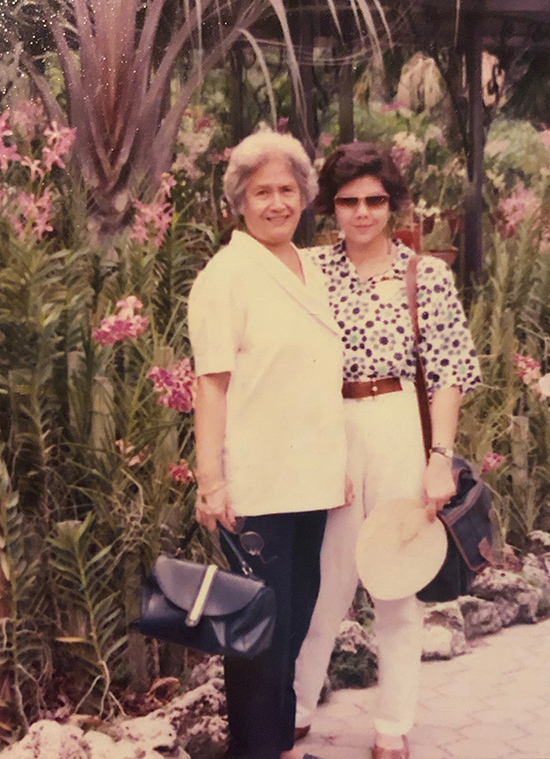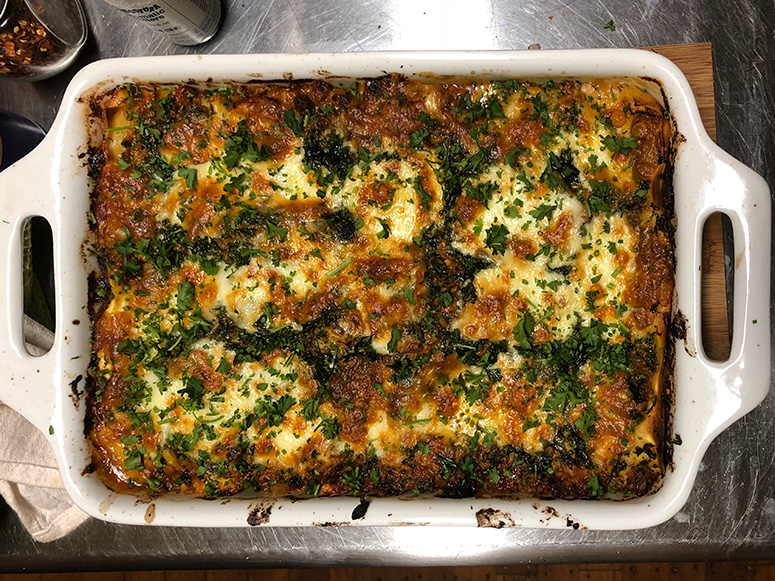A granddaughter’s pursuit of the perfect pasta
Howard Moskovitz, an American market researcher and psychophysicist, is a hero for inventing the category "extra chunky" pasta sauce.
Moskovitz is best known for his research on the bliss point of customers, which is the perfect combination of sugar, fat, and salt in the humble pasta sauce. It took him 45 sauces to finally find what Americans were looking for.
Chefs are also very similar in that they recreate dishes countless times to the point of obsession. They are looking for that bliss point, not only for customers but also for themselves.
Ellie Estrada, the chef behind Hello Stranger, a supper club turned bakery in the pandemic world, has a unique story about how she perfected her signature creation: Fleur de Liz pappardelle. This laminated pasta embeds herbs and flowers. Her story is a reminder that our grandmothers are treasure troves of wisdom.
She shared how her grandmother, Fleur de Liz Victorino, loved to talk about ideas: “My grandmother was a very bubbly, whimsical person, and she wasn't much of a cook. She was one of those who had a handful of recipes, but it's not like she was a Julia Child type where she could freestyle.”
One idea that came to Ellie's grandmother was this idea of a garden pasta. "She was telling me about her friend, who was the wife of a Japanese diplomat, who was telling her that Japanese people like to put flowers or sakuras in their food. So they make soba noodles out of that. During the summer months, I saw it when I went to Japan eventually later in the future. It was just a light-bulb moment."
As a chef, this is one of the guiding principles of Ellie in all her creations: Be insanely original. But let nostalgia drive you. That's the only way you can make products that are unique in the market.
She remembered one afternoon they were both sitting in the garden for six hours when her grandmother asked a young Ellie, "What if we did that with our flowers?" Although they didn't perfect her grandmother’s idea that very afternoon, the memory has been a driving force for Ellie in learning about pasta.

She said, "I'd like to think of myself as a nostalgic person, but I have a feeling that everyone to some degree is pretty nostalgic. It's so easy for us to let a moment pass by, but then once it's passed, you're kind of obsessed with it, and all you want to do is go back. A lot of chefs say that food is a vehicle to the past.”
Nostalgia + Originality = Authenticity
As a chef, this is one of the guiding principles of Ellie in all her creations: Be insanely original. But let nostalgia drive you. That's the only way you can make products that are unique in the market.
She admitted that memories are not enough. However, the pandemic allowed her to take that memory and practice the technique.
It brought her back to the skills she learned while staging in San Francisco. Staging is when chefs work for free in kitchens to learn from other restaurants or chefs. It's a challenging, tiring but rewarding gig.
There are good days and bad days, but no days off.
A stage had to show up for other people, no matter what, even on the worst days in life and the kitchen. These moments are when you learn the secrets of a kitchen.
She said, "Every good restaurant has a pasta dish. You're collecting all of these little tips and tricks from the chefs. They'll just be standing there watching the mixer. And at some point, they'll go, 'The secret is…' That's when you take note; you wait for them to let their guard down and then there it is.”
With the memory of her grandmother and her culinary experience, I asked her, "How do you get pasta right?"
Ellie shared a few tips:
- Don't overthink things.
- Use your instincts. If it's too sticky, add flour. If it's dry, add an egg. You won't mess up!
- Buy fresh pasta and compare!
- Season. Season. Season your pasta water.
- Step out of your comfort zone.
But Ellie's number-one piece of advice is, "The most important thing that people need to remember is not to overthink it; pasta is simple food."
In homage to her grandmother and grandparents’ day this Sunday (Sept. 12), she shared a homey recipe with a twist that would best celebrate our grandparents and the moments we have with them.
Ellie Estrada's Lasagna
Lasagna is a dish made universally. With its layers of flavor, creaminess, and warmth, it is an easy choice to make for those you love. But when your grandmother serves it on a table, you must have a slice or two. When you take your first bite, you must feel something. If you don't, your soul is questionable.
Ingredients:
1 kilo ground beef, 20 percent fat
2 tsps fennel seed
1-2 tsps chili flakes
2 large carrots, peeled
2 onions, minced
8 cloves garlic
1/2 cup tomato paste
4 tbsps olive oil
Sprigs of fresh thyme
Sprigs of fresh rosemary
1 bay leaf
2 cups beef stock
1 cup milk
2 egg yolks
1 cup parsley, chopped
200g low-moisture mozzarella cheese, sliced
200g ricotta cheese
Lasagna sheets (fresh or instant)
Procedure:
In a heavy-bottomed pot, begin browning the beef over medium-high heat, making sure to get some color on the meat. Add in the fennel seeds and chili flakes. Continue to cook. Meanwhile, grate the carrot with a large-hole box grater. Chop your onions and garlic.
Warm the olive oil in a small saucepan and gently sweat the onions, carrots, and garlic until translucent. Throw in the thyme, rosemary, and bay leaf (bouquet garnish, if you're feeling fancy). Allow it to perfume the veggie mixture. Once the veggies are sweated, add in the tomato paste and cook to dry.

Add the tomato paste and veggie mixture into the browning beef. Mix thoroughly to incorporate over medium heat. Deglaze the pan with beef stock, and mix well to emulsify. Allow the sauce to simmer for 45 minutes over medium heat, stirring occasionally.
Once the majority of the stock is reduced, you'll have a thick-looking meat sauce. Take the sauce off the heat and begin gradually adding in the milk and then the egg yolks, constantly stirring to emulsify all the fat from the milk, beef, and yolks. Season with salt and pepper to taste.
Assemble the lasagna: Spread a layer of the meat sauce on the bottom of a 12" casserole pan. Layer your fresh or instant lasagna sheets and top with more meat sauce. Then add a layer of ricotta cheese, and top with slices of low moisture mozzarella. Continue to layer the lasagna this way. On your last layer, top the ricotta cheese with a blanket of fresh chopped parsley. Add more sauce and mozzarella cheese.
Place the lasagna on a lined baking sheet and bake at 375 degrees Fahrenheit for 30 to 45 minutes until the cheese starts to bubble and the edges look crisp. Allow the lasagna to rest for another 20 minutes to allow the layers to set properly. Garnish with more chopped parsley, and slice into the corner. Enjoy!


